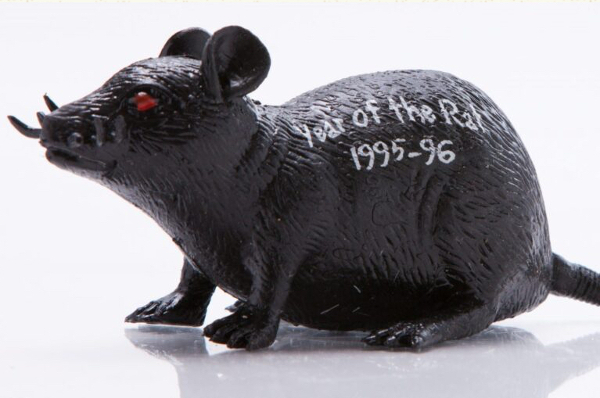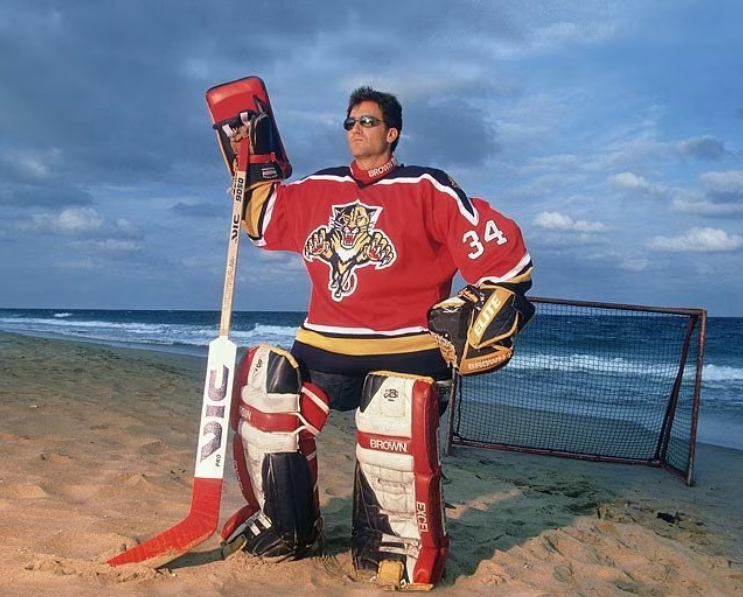
By: Steve McClure | Follow me on Twitter / X @stmcclure1993
The 1995-96 Bruins’ season was an unsettling one, even before it started. The team had high hopes that defenseman Al “The Planet” Iafrate would return from missing the prior year with a knee injury, but the organization received discouraging news that Iafrate had worked out on his own—without consent of the Bruins’ medical staff—and, in turn, had damaged the opposite knee. The injury would force him to miss the upcoming season [The Bruins claimed they shouldn’t have to pay the contract but ultimately lost the $900,000 arbitration case to Iafrate]. With ‘The Planet’ lost for yet another season, the Bruins’ weak defense corps—outside of veterans Ray Bourque and Don Sweeney—would be forced to take its lumps at the expense of new head coach Steve Kasper.
Over the summer, Harry Sinden had attempted to bolster the Bruins’ offensive depth—as the team could muster much of nothing the previous spring against Martin Brodeur and the New Jersey Devils—by signing a prominent Massachusetts-born free agent, Joey Mullen, and trading for another, in Kevin Stevens. However, the 38-year-old Mullen was on his last legs and did not pan out, and in a case of ‘caveat emptor’, Sinden seemed chagrined right out of training camp that Stevens was clearly not the same engaged, physical force he’d banked on attaining from Pittsburgh.
The Bruins slogged through an arduous one-step-forward, one-step-back .500 campaign right into the new year. After a string of victories in Janurary, Steve Kasper had caused angst in the locker room when he benched star right-wing Cam Neely and the aforementioned, underperforming Kevin Stevens for the better portion of a game in Toronto. According to Neely postgame, “If (Kasper) thinks I’m not good enough to play on this team, to help the team win a hockey game, that’s his decision and his opinion…I know that my opinion doesn’t mean much to him… I’ve been here nine and a half years. I’ve been through a lot. I’ve played through a lot and, to be treated like that, it’s tough.”
It wasn’t long after this incident that Stevens was traded to the Los Angeles Kings in return for power forward Rick Tocchet. But to further darken the denizen which the inaugural FleetCenter season had become, in February it was learned that Cam Neely would miss the last 25 games of the regular season and was not expected to return for the playoffs due to his degenerative hip condition.
Despite a 13-3-3 finish to the regular season, the Bruins had given up more goals than only nine other teams. As the conference’s fifth place team, they drew the Florida Panthers—with the fourth best record—in the first round of the playoffs.
In sharp contrast to Boston appearing to be an aging team on the decline, Florida appeared to be a young team with growing potential. In the preseason, NHL prognosticators did not put much stock into the Panthers being able to muster a playoff spot, never mind an opportunity to reach the Stanley Cup finals, but the prognosticators—as well as the Bruins—would learn that Florida would be in the ‘rat race’ for the Cup until the very end.
According to legend, right-winger Scott Mellanby killed a pesky rat in the Panthers’ locker room prior to their home opener with his hockey stick. Mellanby promptly went out and scored two opening night goals with his trusty rodent killer, resulting in a 4-3 victory. With the murder and the two goals, Mellanby had garnered a ‘rat trick’, and once fans got wind of the act, rubber toy rats would litter the ice every time the Panthers scored goals at home.
Mellanby had his best season with 32 goals, young center Rob Niedermayer would never again have such a productive year as his 26-35-61 provided, rookie defenseman Ed Jovanovski—the NHL’s number one overall draft pick the prior year—would be voted to the NHL ‘All-Rookie Team’ and would challenge for the Calder Trophy, and 32-year-old veteran goalkeeper John Vanbiesbrouck would carry the load in net. The rest of the Florida squad played their roles and plugged away throughout the season.
In Game One—Florida’s first franchise playoff appearance—the Panthers scored three first period goals in a span of 90 seconds on a leaky Bill Ranford, and the Bruins would not recover, despite two power play strikes by Rick Tocchet. Rookie defenseman Kyle McLaren was -3 for the game and partner Ray Bourque was -2. Vanbiesbrouck stoned Boston on 42 of 45 shots.
In Game Two at Miami Arena, the Bruins gave goaltender Craig Billington a shot at turning the tide, but he fared no better than Ranford (reportedly nursing a sore ankle), allowing six goals on 28 Florida shots. Billington’s counterpart, Vanbiesbrouck, was even more stingy in Game Two, stopping 37 of 39 Bruin shots. Right-wing Ray Sheppard scored a goal—his third of the series—and assisted on three others, and centerman Stu Barnes also registered three helpers.
The Bruins were a team on the cusp of vacation after a 4-2 home loss. The Game Three narrative was similar to the first two games as Boston poured offensive heat on the fire, but Vanbiesbrouck blanketed the flames. This time the veteran stymied the Bruins on 40 shots. Ranford was not such a puzzle to Florida, as the Panthers’ timely smites got the best of the Bruins’ goalie on four of 26 attempts. Mellanby—the ‘Rat Killer’—scored a power play goal in the first period, and right-wing Jody Hull, a twenty-goal-scorer during the regular season, chipped in two even-strength goals on the FleetCenter ice. Florida possessed a 4-0 lead late in the second frame and fiercely held on to secure a 3-0 series advantage. “We were well aware that Florida was a formidable opponent coming in, but it’s shocking to be down three games,” lamented Bruins Coach Steve Kasper.

On the brink of elimination, Boston won a tight checking affair in Game Four. Adam Oates scored two goals—one while shorthanded in the third period—while Bill Ranford was only required to stop eighteen of twenty Panther shots. The Johan Garpenlöv–Niedermayer–Mellanby line was victimized throughout the game by the Bruins in the 6-2 victory. Both teams would travel back to Miami for Game Five.
Another one of the Panthers’ depth forwards, Bill Lindsay, would break a 3-3 deadlock at 15:03 of the third period in Game Five—his second strike of the series—by accelerating past Bourque as he entered the zone and chipping the puck through Ranford’s five-hole. Vanbiesbrouck and the rest of the energized Floridians would preserve the lead the rest of the way, sending the Bruins home for the summer. The home ice win capped a 4-1 opening round series victory for Florida. Regardless of generating two power play assists, Hall-of-Famer-to-be Ray Bourque could not harness the Florida attack and looked to be a step or two behind the young and hungry Panther pack. The 35-year-old veteran finished the game with a plus/minus of -2, and he was a -4 for the entire series.
Though Vanbiesbrouck was the vital cog, Florida’s youth and depth would be Boston’s undoing. The Bourque-Neely era came to an end in Miami Arena that Game Five afternoon, and it would be years before Boston got its identity back again. For their part, the Florida Panthers embraced its ‘Year of the Rat’ ride on its way to the Stanley Cup finals. In the end the Panthers were swept off the ice—much like their fans’ rubber rats after each goal—in four games by the dominant Colorado Avalanche.


Leave a Reply